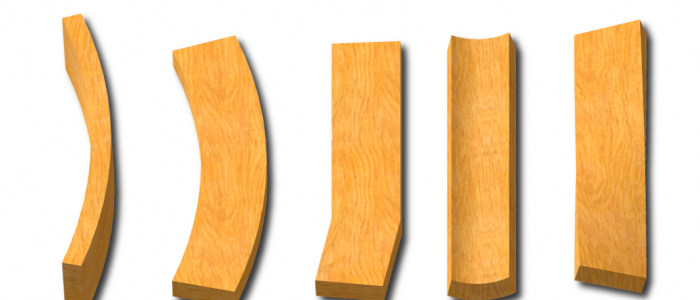Wood is historically known to be built to last. Unfortunately, many wood installations succumb to splitting and warping over time.
But if you know how to properly maintain timber, you can increase its lifespan and even enhance the appearance. Below we explore what you need to look out for and how you can help prevent wood from warping.
Understanding wood moisture
Before getting into how to prevent wood warping, it’s important to understand what causes wood to change shape.
Timber has a natural tolerance in terms of how much it can expand and contract before succumbing to warping or shrinkage. The amount of shrinkage in wood will vary from species to species, but essentially, wood warping occurs when the moisture content of different parts of a piece of wood changes unevenly.
When wood has a relatively high moisture content, it shrinks as it dries until it reaches equilibrium with relative humidity, sometimes called equilibrium moisture content (EMC).
However, there are different factors that can affect the time needed for wood to reach EMC, including:
- Size of the piece of wood (thicker pieces take longer to lose or absorb moisture)
- Coating (coated wood takes longer)
- Grain orientation (end grain will take less time)
- Ambient air temperature (warmer will take less time)
Outdoors
Any outdoor wood (such as decking or garden furniture) that is sealed at least once every year will repel water and last longer than wood that is simply left to the elements.
Ask a member of our team if you’re unsure what type of treatment your timber needs.
If you have a significant amount of warping on outdoor timber structures, it could mean that the wood is already too far gone to salvage. It is important to note, however, that mild or even moderate warping can often be fixed at a fraction of the cost of replacement.
When structural stability is not an issue, damaged outdoor wood surfaces can often be sanded or stripped and then sealed, giving them a fresh new look and add years to their lifespan.
Indoors
While timber structures are more likely to deteriorate, being exposed to the natural elements, that’s not to say your indoor fixtures aren’t at risk to warping too. Be sure to look out for visible signs of deteriorations such as stains, cracked paint or a change in shape.
Take a look at our guide on how to rejuvenate your timber door for more actionable advice on this.
In a nutshell
Whatever wood you’re dealing with, the best thing you can do to prevent warped wood is to bear in mind; what type of wood is it? What kind of finish does it have? What techniques do professionals recommend to care for the combination of the two?
Answering these questions correctly will not only keep your indoor or outdoor wood looking great, it will lengthen its lifespan and save you money in the long-run by increasing the amount of time between replacements and repairs.
If you have any advice you’d like to share – be sure to let us know on Twitter. And if you’re looking for treated wood that can stand up to the elements, be sure to get in touch today.
